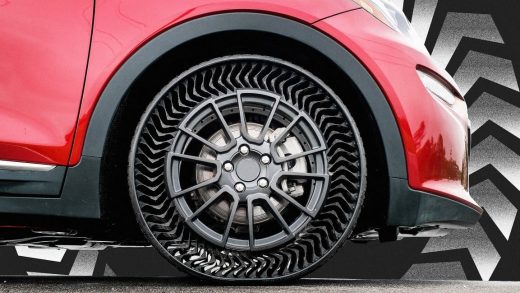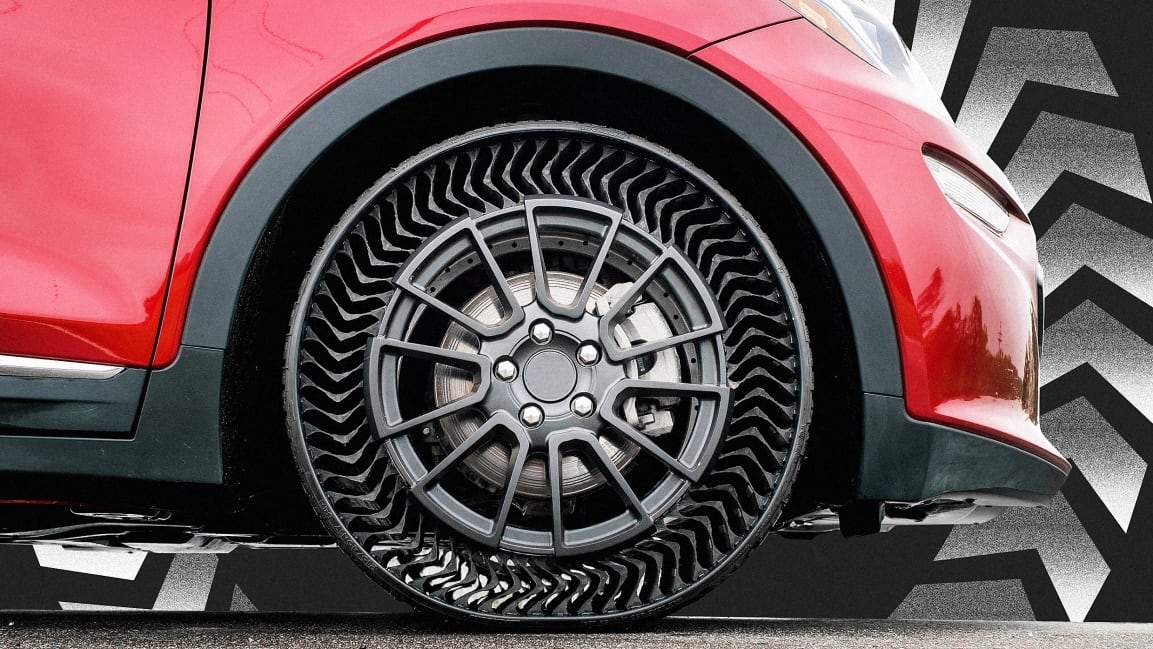Michelin’s ingenious new tires ensure you’ll never get a flat again
There’s no force in the universe more humbling than a flat tire. Here you are, god of combustion engines, cruising effortlessly at 40 miles per hour in your Kia crossover with half a Costco’s worth of steamy rotisserie chickens in the back when, bdump bdump bdump. And then the inner monologue begins: Oh no. Not me. This couldn’t be happening to me. I drive a gently used 2016 Sorento!
But now tire manufacturer Michelin and the car giant GM are teaming up to eliminate the problem. How? By taking the air out of tires altogether.
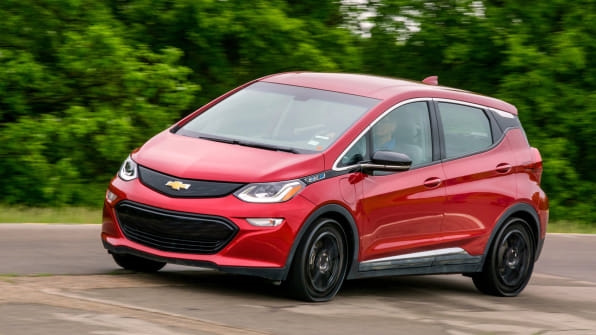
Michelin is developing a tire called the Uptis (or Unique Puncture-proof Tire System), which is a tire that cannot ever go flat or blow out because it doesn’t require air to stay rigid. Instead, the Uptis features an internal system of flexible spokes that support the tire.
The Uptis is a working prototytpe that will begin testing on some Chevy Bolt models this year in Michigan. By 2024, the two companies hope to release the Uptis on a commercially available vehicle.
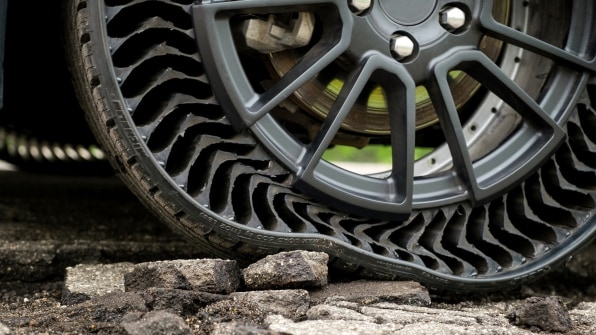
Airless tires are not an entirely new idea. They already exist in the world of cycling, and even Michelin sells something called the Tweel for lawnmowers. The Tweel looks a whole lot like a mini version of the Uptis, with the same rubbery spokes in the middle of the tire. As the Tweel’s marketing materials explain, those spokes don’t merely replace the need for air, they work like mini shock absorbers, deforming to bumps to ensure a smoother ride than a bouncier, inflated tire offers today. Yet the car industry has been shy to adopt airless tires because, when properly contained, air is in many ways the perfect material for a tire. Air is virtually weightless, so it doesn’t impact a vehicle’s performance and efficiency. Air can also be hit with bump after bump and it doesn’t lose any structural integrity. After all, it’s just air.
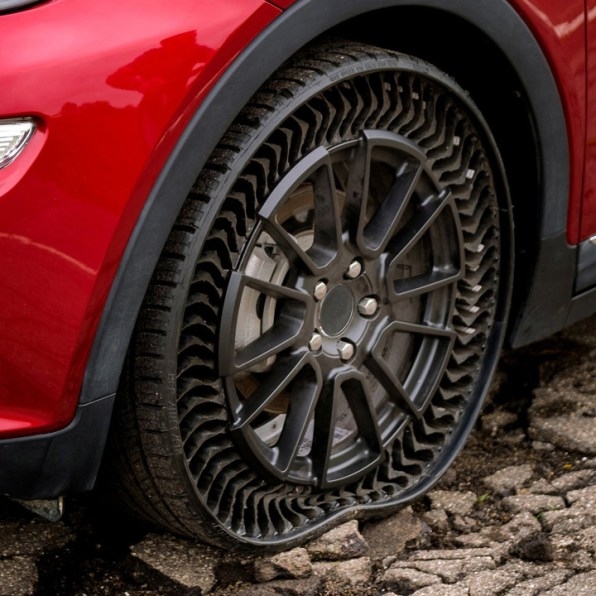
For a moment I wondered, why would Michelin ever want to create a tire without air? Wouldn’t a tire that couldn’t go flat mean consumers would never buy tires again? But of course, Michelin isn’t in the air business; it’s in the tire business. Just because its Uptis tires can’t leak doesn’t mean they won’t still wear out. From the treads to the internal support structure itself, all of these elements seem susceptible to the ongoing punishment of pavement. That said, Uptis tires could last longer than conventional ones, Michelin claims, simply because drivers can never make the mistake of over- or under-inflating them, which can cost tires some longevity.
Indeed, it’s not just the promise of added safety, but the mindless user experience that could make the Uptis irresistible to many car buyers. Thankfully, cars have been trending from extremely complicated mechanical machines to simpler ones. Electric cars already feature engines that require less maintenance than their gasoline counterparts–and require no oil change every 3,000 miles. LED headlights can run 14,000 hours before being replaced, unlike halogens of yore. And automakers across the board are sharing more parts between vehicles in an effort to cut cost and complicated component sourcing.
It’s easy to see Uptis as right in line with these trends, providing a mindless tire for a mindless vehicle that even self-drives us on our mindless commute. A sense of adrenaline-fueled adventure that vision is not, but it sure beats an unexpected flat.
(52)

